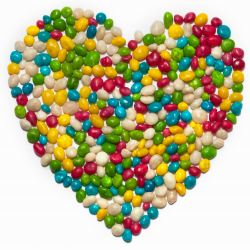
On June 22, 2015, General Mills announced reformulations of their breakfast cereals removing artificial flavors and colors.
“This is about removing barriers to cereal,” says Lauren Pradhan, senior marketing manager for wellness strategy in the Cereal division. “People have told us they don’t want dyes in their cereal. … This is about giving people food that they love,” says Jim. “We are continually innovating and renovating our products to ensure we’re meeting consumer expectations,” says Jim.” [1]
But in the last week, General Mills announced the return of “Classic Trix” in all its artificially brightly colored and flavored glory. So much for a consistent “wellness strategy.” Also this week I noted an article about another favorite, LaCroix’s Sparkling Water, which consists of carbonated water and natural flavors. The juxtaposition of the two articles made me wonder about what natural colors and flavors really are.
Finding the answer takes us into the world of law, where words are the currency – a world that gave us qualifiers like “It depends on what the meaning of "is" is.” Here is the FDA definition,
“Natural ingredients are derived from natural sources (e.g., soybeans and corn provide lecithin to maintain product consistency; beets provide beet powder used as food coloring). …Also, some ingredients found in nature can be manufactured artificially and produced more economically, with greater purity and more consistent quality, than their natural counterparts. For example, vitamin C or ascorbic acid may be derived from an orange or produced in a laboratory.” [2]
So, natural means that the flavor or color originally comes from a natural source. For example, the colors of carrots originate from a chemical found in carrots called anthocyanins. Here is how it is isolated and concentrated.
“Twenty gm of purple carrots was mixed with 100 ml ethanol acidified with 0.01% citric acid and macerated in a warring blender at full speed for 5 min. The mixture was filtered by Whatman No. 1 filter paper through a Buchner funnel. The residue on the filter paper was washed rapidly with the extracting solvent until collecting of about 450 ml from extracted pigment carrot. The extract was concentrated in a rotary vacuum evaporator at >40 °C until the solvent evaporated.” [3]
Now to be fair, the process is a bit different when scaled for industrial needs, but you can see that at least from a legal point of view, natural colors and flavors at least begin in nature. Further insight into natural colors can be found at FoodNavigator-USA, a business to business website. The article is instructive in two ways. First, using natural colors in foods is more complicated than just adding them to the mixture, they can be affected by heat or other ingredients in the mix. That means that sometimes they require additional processing. Second, natural colors are often not what we believe the label reflects, but what the law allows. For example,
“We got starch based products which include a blue-ing agent, which means they can be listed on the label as vegetable juice or spirulina, even though what’s providing the white color is the starch.”
Then, of course, there are incidental ingredients.
“By incorporating clouding agents such as gum Arabic, ester gum, or ester of wood rosin-which make low juice drinks seem more juicy-into color emulsions in its smooth beverage cloud-Sensient can also help beverage companies shorten their ingredient lists, says technical director David Gehbardt: ‘If the clouding agents are incorporated into the color system as incidental additives, you don’t have to list them separately.”
My point is this that the labels applied to natural color and natural flavors are definitions crafted by attorneys working for ‘special interests’ and that includes the FDA and experts. As consumers, we mistakenly believe natural color and flavors are not processed or chemically created, that they are just waiting ‘in Nature” to be used. The same is equally true for the term “organic” for which there is no consistent standard or definition. Is there any evidence that natural colors are bad for you? No. But why make the distinction from artificial? Corn is natural, high fructose corn syrup is felt, by many, to be an evil chemical. At what point did the corn transmute, like some deranged alchemy, from natural to artificial? Are our labeling regulations more about “giving people food that they love,” than about what ingredients are within. I see no scientific basis for believing that artificial and natural colors have different impacts upon people. I do see how marketing them does.
[1] https://blog.generalmills.com/2015/06/a-big-commitment-for-big-g-cereal/
[2] https://www.fda.gov/food/ingredientspackaginglabeling/foodadditivesingredients/ucm094211.htm
[3] http://www.sciencedirect.com/science/article/pii/S0570178314000025
